Aquaponics farming: How two hotels are looking to boost their sustainable practices
Advert
Singapore
Aquaponics farming: How ii hotels are looking to heave their sustainable practices
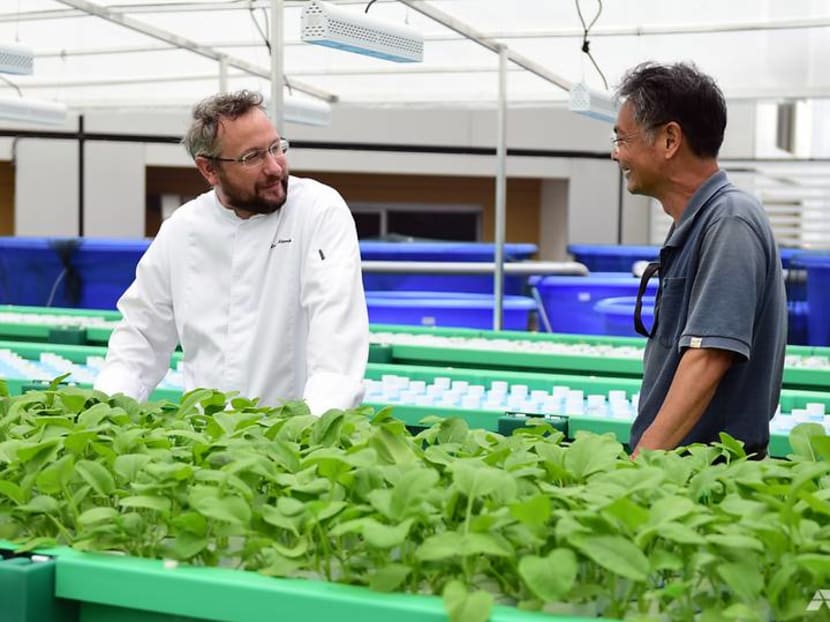
Chef Robert Stirrup and gardener James Lam are involved in the day-to-day operations of the aquaponics subcontract, capable of producing upwardly to 1,200 kg of vegetables and 350 kg of fish monthly. (Photograph: Try Sutrisno Foo)
SINGAPORE: You're sitting down in a restaurant with some friends, looking at the card of finely curated steaks, fish dishes and salads.
The ingredients for these dishes would probable come from countries similar New Zealand, Republic of indonesia and Malaysia. This is given that Singapore imports most of its food.
But for guests at the Fairmont Singapore and Swissotel The Stamford, some of the ingredients could come from a identify much closer - the hotels' rooftop, where an aquaponics farm was recently installed.
Aquaponics is a combination of aquaculture and hydroponics, where fish and plants are grown together in a closed organisation.
"Quite simply, you feed the fish, the fish eat the food, pass the food, and so all the nitrates from that go through the different towers and the dissimilar beds within the garden.
"The vegetables absorb the nitrates from the h2o, and grow, in a circular system," said chef Robert Stirrup, who is besides the director of culinary operations at the hotels. He oversees the subcontract's daily operations.
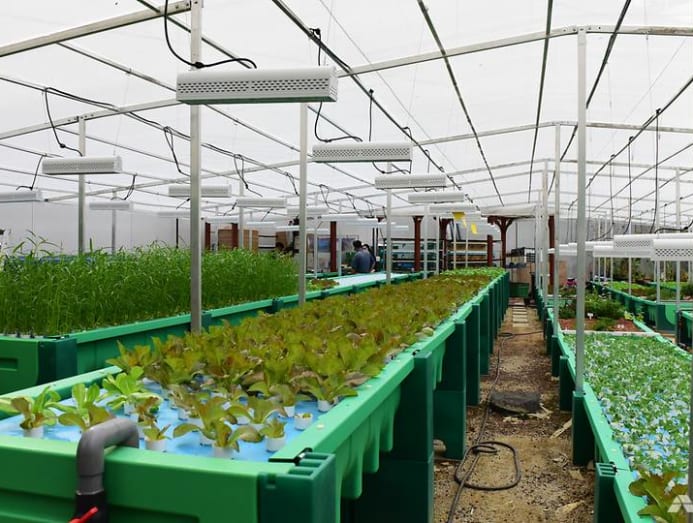
The hotels said the farm will exist able to produce about one,200 kg of vegetables and 350 kg of fish monthly for the hotels' kitchens once it's fully operational.
The farm is the brainchild of the hotels' full general director Marcus Hanna.
"I was at a friend's place for dinner, and he had this hydroponics tower in this living room, where he was growing numerous types of lettuce. I was quite intrigued by that, considering as you know, 90 per cent of the produce in Singapore is imported, so to accept something in the living room – you're non going to observe anything fresher to consume," he said.
He wanted to replicate this freshness for the hotels' guests, and raised the idea with Mr Stirrup and Mr Ahmed Disokey, the surface area manager of engineering science and business innovation at Accor Luxury Hotels.The Accor Group operates both hotels.
They bought into the idea speedily as it volition as well boost the hotels' sustainability efforts and iv months later, they had turned it into an operational aquaponics fix-up.
READ: Raising the roof: Cultivating Singapore's urban farming scheme
THE CHALLENGES TO OVERCOME
Nestled between the hotels' two buildings, the 450 sq m rooftop farm is deceptively small.
Withal, that's enough space for thousands of leafy vegetables - from kangkong (water spinach) to several kinds of lettuce - to abound on two rows of densely packed white towers and six rows of green plastic half-cylinders, too known as module infinity tanks (MITs).
Five fish tanks in the back, each containing about 400 footling scarlet tilapias, complete the system.
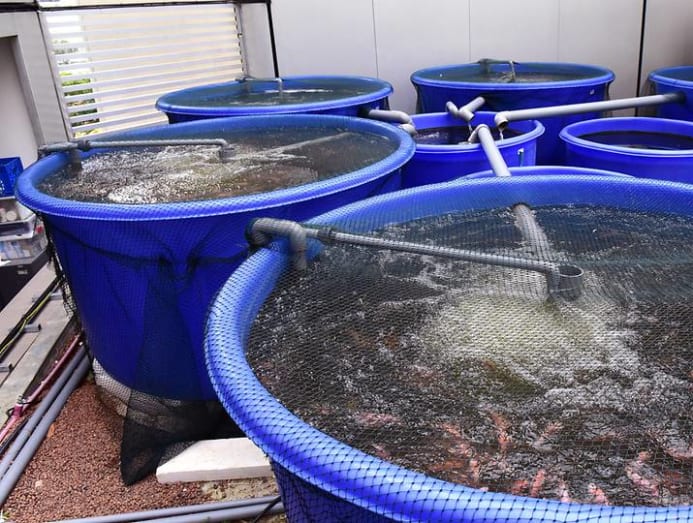
In 10 months' fourth dimension, the farm will produce 30 per cent and 10 per cent of the hotel's daily requirement for greens and fish respectively, estimated Mr Hanna.
Two gardeners perform the day-to-day maintenance.
"It's very difficult to sustain something up here nether this kind of conditions.
"We don't take plenty light, we don't have plenty sunshine, we don't accept h2o, we have extremely strong winds coming through. So this is not a very ideal location," said Mr James Lam who was hired well-nigh v years ago to tend to a tiny herb garden which used to occupy the space.
There is also the issue of regulating the temperature and moisture in the farm, said Mr Stirrup.
"We had to work out a way of dropping the temperature so we put the tentage and the coverage over the aquaponics itself and it helps us to bring the temperature downwards by about six degrees which makes it more of an ultimate temperature to abound a lot of those vegetables," he said.
HOW THE PRODUCE ARE GROWN
The farm is outfitted with features that provides an optimum environment for the plants to grow speedily – a shelter protects the plants from direct sunlight and cools the area to between 24 and 25 degrees Celsius during the day.
LED lights hung in a higher place the plants are switched on from 6pm to 8pm to heave their growth.
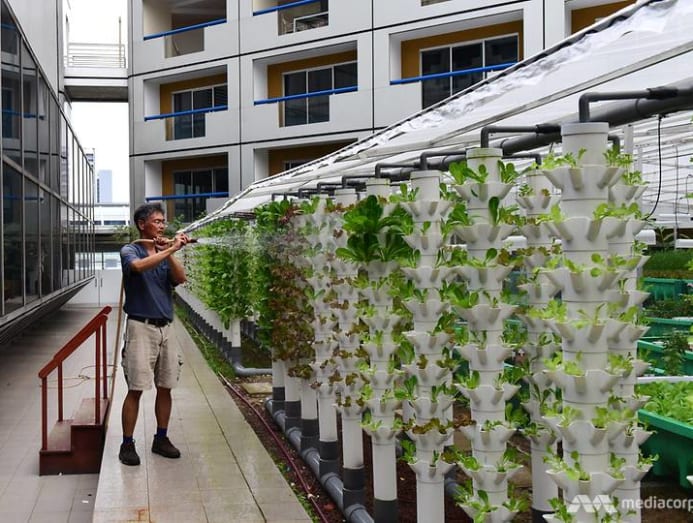
They help shave off fifty to 60 per cent of the time needed to grow the vegetables, said Mr Disokey.
Fast-growing vegetables and fish are grown in different batches for a constant supply of produce. A drove of herbs completes the farm.
"Nosotros take 1 of the largest collection of mints," said Mr Lam, counting them off on his fingers. Some choice mints include: chocolate, pineapple, ginger, orangish, lime, grapefruit and apple, which are specially curated for use in the hotels' bars.
The gardeners piece of work closely with the chefs in the kitchen then that what is grown is tailored to their needs.
Describing how vegetables are grown on the aquaponics system, Mr Lam said the seeds take to be individually placed into a floating block by mitt. Sometimes he and swain gardener, Ms Jenny Kang, will put two seeds into the same cantankerous-shaped opening equally an assurance that at to the lowest degree one of them will grow. Each block contains betwixt 60 and 96 such openings, depending on its size.
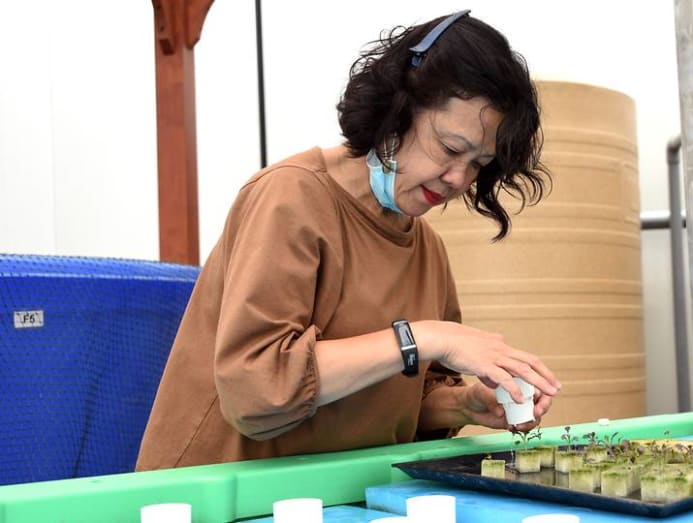
These blocks will become into the nursery for one to 2 weeks, until the seeds germinate. They would so be transferred into individual pots and are left to grow either in the green MITs or towers. The vegetables would take 3 to four weeks to be fully grown.
The hotels are looking to incorporate them in special menus in several of their restaurants.
"The thought volition exist that we will do dishes on the menus where we volition use initially… the vegetables, and and so long-term, the idea is obviously we will incorporate the fish into the dish, so nosotros will have a completely sustainable dish from the garden," said Mr Stirrup.
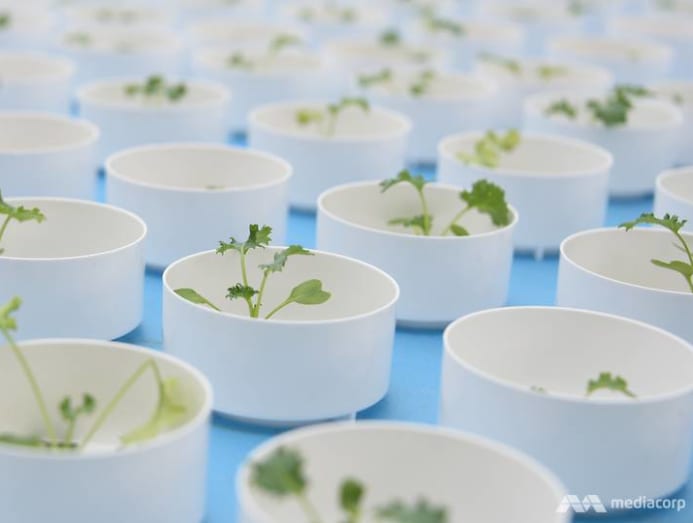
While the farm tin can but produce 30 per cent of all vegetables needed, Mr Stirrup is optimistic that in time it volition be able to produce enough of some varieties to fully meet their requirements.
The hotels are besides hoping to experiment with growing fruits including a variety of strawberries which accept grown well in Thailand.
"Simply working through the whole procedure, to really come across what vegetables work well and grow in the best way, that we would shorten it down to the products that we would select long-term," said Mr Stirrup.
To encounter the farm abound from an idea to a reality is "very exciting", he added.
"I've simply seen this done on a very small scale within a hotel before. Non as aquaponics, but as hydroponics.
"So for us to really build on the scale that it is, to see it actually existence very shut to where we can actually get to selection and use information technology, and to really just taste some of the product and how fresh it is, in comparison to some of those products that we've been buying… it'southward very different."
'xxx By 30' VISION
The aquaponics farm is the hotels' way of helping Singapore attain its '30 past 30' vision, said Mr Hanna.
Announced in March this year, this is a target set by the Singapore Food Agency (SFA) for the country to produce 30 per cent of its own nutritional needs by 2030.
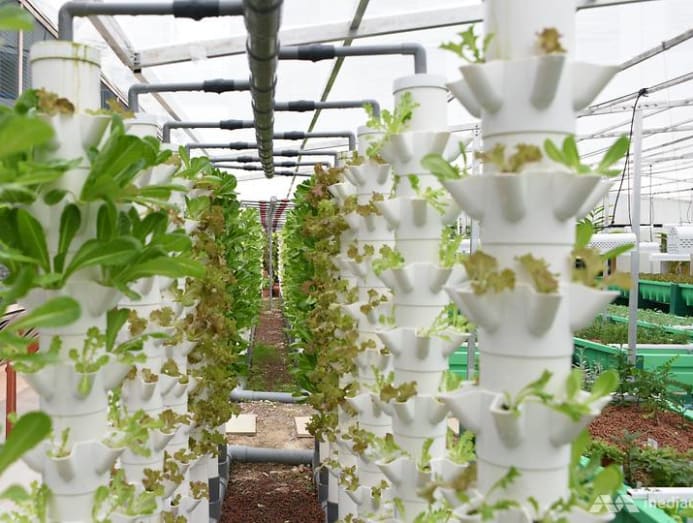
Aquaponics is simply i prong of the hotels' sustainability bulldoze.
At that place are several initiatives, amidst which are: the Eco-Wizz digester, which turns leftover food into water and compost; the Treatsure App, which sells the buffet food at reduced prices just before closing; and a partnership with local charity 'Food from the Heart' which collects leftover nutrient from the hotel to support families in need.
As a champion of several sustainability initiatives, Mr Stirrup is extremely witting of the touch on of the efforts in promoting sustainability.
"Honestly, nosotros have a huge impact, being such a big property, on the volumes and quantities that we utilize. Then even making a small change… obviously has a huge impact on how much we're really producing in terms of waste and what tin be recyclable instead," he said.
Recent Searches
Trending Topics
Source: https://cnalifestyle.channelnewsasia.com/singapore/aquaponics-rooftop-farm-fairmont-swissotel-stamford-hotels-230801


0 Response to "Aquaponics farming: How two hotels are looking to boost their sustainable practices"
Post a Comment